In popular culture, augmentative/alternative communication (AAC) is often depicted as a speech-generating device or computer, such as the model used by famous theoretical physicist, Stephen Hawking. In reality, AAC is a spectrum, with different systems spanning along a continuum. There are high-tech, low-tech, and no-tech options, with each selection factoring in the cognitive, motor, and cultural needs of those utilizing it. For example, an adult with mild expressive aphasia (an acquired language disorder), may primarily use no-tech or low-tech strategies, such as gesturing, writing, or drawing, while a child with cerebral palsy (a congenital motor disorder), may opt for a high-tech, speech-generating device with a key guard, allowing for greater fine motor control when pressing on the screen (Figure 1). No, low, and high-tech devices may also be used in combination with each other, especially in cases where it might be impractical to use a high-tech AAC device, such as in a swimming pool. In such instances, an individual might use basic signs or sign approximations to communicate with those in his or her environment.
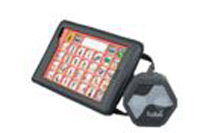
fitted with an orange key guard to increase selection accuracy.
See the photo link and a thorough list of high tech options
at http://tatp.edb.utexas.edu/products.php?scid=27.
AAC selection and maintenance is provided by speech-language pathologists (SLPs). SLPs assess communication needs and provide therapeutic treatment for AAC users. During evaluation, a variety of AAC options are considered, with the uniqueness of each individual in mind. AAC is not a “one size fits all” mentality. Strategies or devices used by the same individual may change overtime, or a person might grow with their device, choosing a system that allows for increased sophistication as their needs develop. In individuals with cognitive, communication, or language impairment(s), a learning period may be required to determine whether or not a particular system is truly appropriate. Therapists, teachers, parents, and/or caregivers should be highly involved in ensuring that the system is used frequently and consistently across a variety of settings to promote an individual’s competence with the system.
No-tech and low-tech AAC includes strategies such as gesturing, signing, writing, drawing, topic boards and the use of visuals. Visuals also come in a variety of shapes and sizes, including real objects, true object based icons (TOBIs), and picture symbols. For clients with visual impairments or those who benefit from sensory input, tactile representations are also a viable option (Figure 2).
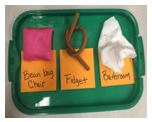
feel of real-life objects and situations.
Although the starting point will vary with each individual, young, nonverbal children with an autism spectrum disorder (ASD) often begin their AAC journey using visual symbols. As stated previously, these visuals come in a variety of modalities and should be selected based on several factors related to each individuals’ cognitive and language performance. For AAC users who require more concrete visual representations to communicate, real objects or TOBIs may be recommended (Figures 3 and 4 below).

the object of desire (i.e., empty tub of Play-Doh) for the object itself.
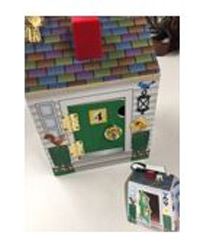
Actual picture of an item (i.e., the dollhouse) for the item itself.
Alternatively, others may utilize more abstract representations of language, such as picture symbols (Figure 5 below) or even written words.
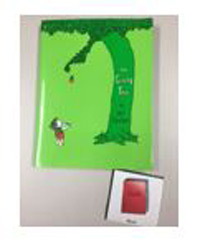
exchanged for it, making it multipurpose. This visual style is more abstract, or
non-literal, compared to the modalities used in Figures 4 and 5.
Often, once a child has shown knowledge of how to communicate for preferred items (e.g., snacks or toys) using picture symbols, he or she may be ready to start putting words together. Where the child may have first only indicated a preference for McDonald’s by selecting a McDonald’s symbol in isolation, now the child may pair a “go” symbol with a McDonald’s symbol to build the phrase “go McDonald’s” (a similar concept is shown in Figure 6 below). Some programs, such as the Picture Exchange Communication System (PECS) provide prepackaged, low-tech communication systems for AAC learners (read more about PECS at What-is-the-Picture-Exchange-Communication-System-or-PECS).
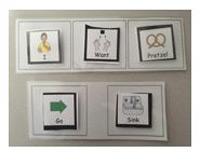
and sentences. These particular picture symbols were created
using Lesson Pix (https://lessonpix.com/).
Along the AAC continuum, there are high-tech devices, as previously pictured in Figure 1. High-tech AAC offers voiced output. It may continue to be icon-based, or it may be text-based. Some high-tech devices may be controlled by the hands, the cheek or even the eyes. The options are virtually endless.
Commonly, high-tech devices for nonverbal students with ASD are iPad based apps, such as LAMP Words for Life (https://aacapps.com/lamp/) or Proloquo (https://www.assistiveware.com/product/proloquo2go). In a recently released video, Apple interviewed Dillan Barmache, a nonverbal teenager with ASD who uses an iPad to communicate (view the video at https://www.youtube.com/watch?v=UTx12y42Xv4). Communication apps for the Android or iPhone also exist, such as the iSpeech (https://www.ispeech.org/apps/tts) text-to-speech app pictured in Figure 7.
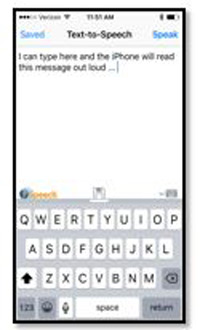
and make it audible by pressing the Speak button in the top right hand corner.
Other systems, such as Tobii Dynavox (http://www.tobiidynavox.com/) (formerly shown in Figure 1) have similar software to the programs listed previously and may offer additional features, such as larger screen sizes, big mac switches, or eye gaze control.
It is important to note that not all high-tech devices are computer-generated. For example, Figure 8 shows a tactile/voice-output system for a student with a visual impairment, while Figure 9 shows a voice output system used in combination with picture symbols. The only factor in AAC being considered “high-tech” is that it can audibly speak for the intended user.
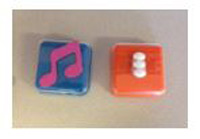
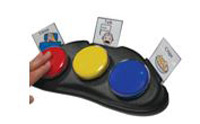
The span of AAC options is wide, but whether no-tech, low-tech, or high-tech, when choosing an AAC system, the key is to individualize, individualize, individualize! An AAC system works best when it has been carefully crafted to meet the needs of each user. Everything from the size of the pictures to the number of words or icons on a computer screen should be chosen following an AAC evaluation conducted by a licensed SLP in collaboration with each individual and his or her team of therapists, caregivers, and/or family.
Hopf, R. (2016). The augmentative/alternative communication spectrum. The Reporter, 21(11). Retrieved from the-augmentative-alternative-communication-spectrum.

